After hearing my seafarer friend talk about his experiences with the different types of bulk carriers, I became confused and even questioned my understanding of those ships.
It’s not because I’m a tanker guy that I failed to comprehend what they meant. It’s just that the classes of bulkers have become more diverse to the point that many find it puzzling.
If you’re like us and share frustrations about what Capesize, VLOC, Ultramax, Kamsarmax, and Supramax are, stick to this post to know the difference between those types of bulk carriers.
What are Bulk Carriers?
Bulk carriers are vessels primarily designed to transport unpacked, dry, and solid cargo in bulk.
Their cargoes are generally uniform in composition. They are loaded directly into the cargo space without using containers.
Bulk carriers are also defined in SOLAS Chapter IX/1.6 as ships with a single deck, topside tanks, and hopper side tanks in cargo spaces.
Iron ore, coal, grain, bauxite, phosphate rock, steel, ores, cement, sugar, quartz, salt, fertilizers, sulfur, scrap, aggregates, and many other commodities are transported by these merchant ships.
What are the different types of Bulk Carriers?
There are many kinds of bulk carriers, and they are classified according to their design structures, size categories, and the regions they trade.
Types of Bulk Carriers According to Design
The first type of bulk carriers is classified according to their design.
They could be of any size, and trade anywhere in the ocean. You can differentiate them by their glaring features.
1. Geared Bulk Carriers
Geared bulk carriers are an all-time favorite among many ports.
These ships have onboard cranes or derricks for loading and unloading cargo by themselves. Their cargo-handling equipment has grabs that scoop the goods during cargo operations.
This method is slow but practical in poorly equipped ports for handling bulk cargo. Additionally, they are highly in demand due to this flexibility.
Many handy-sized vessels, mini-bulkers, and a few Panamax vessels belong to this category.
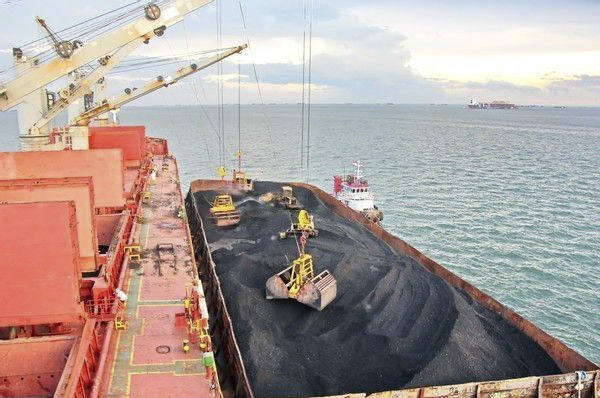
2. Gearless Bulk Carrier
They are the opposite of geared bulk carriers. Gearless bulk carriers lack cargo handling equipment and rely heavily on shore cranes for loading and discharging.
Their cargo operation is faster since the shore facilities’ cargo handling equipment is very efficient at handling cargo in bulk.
Panamax and Valemax bulkers are usually gearless due to their size.
3. Conventional Bulk Carriers
These types of bulk carriers are geared bulkers with built-in cargo handling equipment.
They are the most in-demand type due to their ability to load and/or discharge cargo on their own.
With five to nine cargo holds and built-in hatch covers, these ships are among the favorites of charterers and shipowners.
4. Combination Bulk Carrier or OBO
We did define that bulk carriers transport solid goods in bulk. However, combination carriers are different.
We also call these vessels OBO, or Ore, Bulk, and Oil carriers because they can transport liquid cargo in bulk.
These features allow them to trade in the tanker market depending on seasonal or commercial demand.
5. Self-Dischargers or Self-unloaders
Self-unloading bulk carriers are equipped with conveyor belt discharging systems with booms that can be swung out from the ship to discharge directly ashore.
This equipment is expensive to install and reduces the space available for cargo.
However, the disadvantages can be outweighed in short-sea trades by the ability to significantly reduce time spent in port.
6. Bulker Lakers
These ships, also known as lake freighters or lakers, operate on North America’s great lakes.
They carry goods such as limestone, iron ore, grain, coal, or salt from the mines and fields of the upper Great Lakes to the populous industrial areas farther east.
Their most notable feature is the vessel’s accommodations, which are installed on the forward part of the ship.
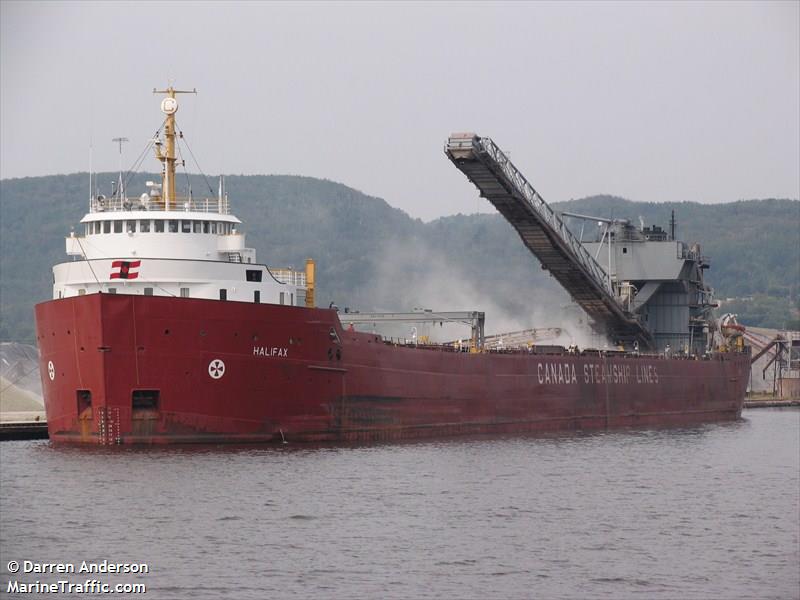
7. BIBO or “Bulk-In, Bags Out”
This bulk carrier loads the cargo in loose bulk but “bags” them before discharging.
A baggage equipment system packs the cargo on board and discharges them in bags instead of in bulk, hence the name bulk-in/bags-out.
However, this type of bulker is very seldom nowadays due to its complicated design.
Categories of Bulk Carriers by Sizes
It is actually pretty easy once you understand the naming formats of bulk carrier types. Now that we know them using their design features, let’s dig deeper into their sizes.
A point to consider here is that their sizes are measured in tonnes deadweight, deadweight tonnes, or deadweight tonnage (dwt).
Deadweight tonnage is the vessel’s overall carrying capacity, including bunkers, fresh water, stores, cargo, crew, etc.
1. Mini Bulk Carrier, AKA Coastal Bulk Carriers
Mini bulkers are small bulk carriers that range between 1,000 and 10,000 tons of deadweight.
They primarily sail on the coastal, short-sea, and middle trade routes in Europe and anywhere in the world.
Due to their small size and low draft, they are best for carrying small cargo consignments that need to be delivered to smaller ports inside inner harbors.
2. Handy Size Carriers
The most common sizes of bulk carriers are handy-sized vessels weighing between 10,000 to 39,999 dwt with a draft of fewer than 11.5 meters.
The handy-sized bulker is so named because her tiny size allows her to enter numerous ports worldwide.
Handy-size bulkers are further subdivided into three, namely:
- Small Handy – 10,000 to 24,999 dwt
- Mid-size Handy – 25,000 to 34,999 dwt
- Large Handy – 35,000 to 39,999 dwt
3. Handymax Carriers
Due to the trend for each category of bulker to increase in size, some commentators agree that Handymax bulkers are between 40,000 to 59,999 dwt.
These ships usually have five cargo holds and four cranes having a safe working load (SWL) of 30 tons.
They can still dock on most ports having draft and length limitations of less than 190 meters.
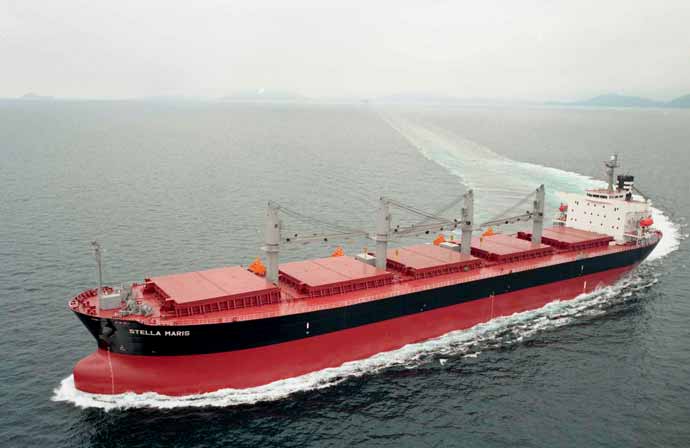
4. Supramax
Supramax bulk carriers are an upgraded version of handymax carriers due to an overwhelming demand for this kind of bulker.
These ships are between 50,000 to 60,000 dwt. normally having five to eight cargo holds and four powerful cranes of 40T SWL.
Supramax vessels have a length-over-all of 189.99 meters, a breadth of 32.26 meters, and a maximum draft of 11.919 meters.
5. Ultramax Bulk Carriers
Due to the increase in port sizes and draft limitations, Ultramax carriers came into the market.
They are the largest handymax class of bulk carriers and are usually favored over Supramax due to their higher cargo-carrying capacity and better fuel efficiency.
Ultramax bulk carrier vessels have a length-over-all of 199.99 meters, a breadth of 32.25 meters, and a maximum draft of 12,948 meters.
6. Panamax Carriers
Larger than the Handymax vessels, Panamax bulk carriers are named because they are designed to fit into the locks of the Panama Canal.
For the record, the maximum dimensions of Panama Canal locks are 300 meters long, 33 meters wide, and 12.04 meters deep.
Panamax bulkers have a standard deadweight between 60,000 to 99,999 dwt. Their service speed is typically 12 to 14 knots.
7. Neo Panamax (New Panamax)
The opening of the new Panama Canal last June 1, 2008, increased the capacity of vessels it can handle. The maximum size of ships that can pass here is called Neo Panamax.
Neo Panamax bulkers have a weight of 120,000 dwt and have dimensions of 366m LOA, 51.25m width, and a draft of 15.2m.
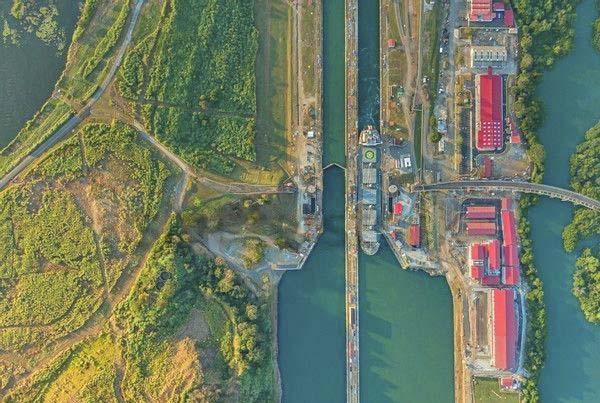
8. Capesize Bulk Carrier
Cape-sized bulk carriers have deadweights in the range of 100,000 – 199,999 tonnes deadweight.
There is actually a good reason why they are called Capesize bulk carriers.
Since they can not pass through the Panama Canal due to their size, they have to sail around the CAPE of Good Hope when traveling from the Pacific to the Atlantic Ocean or the Caribbean.
Capesize vessels, with loaded drafts usually above 17 meters, can be accepted fully laden at only a small number of ports worldwide.
They are usually engaged in the long-haul iron ore and coal trades.
9. Very Large Ore Carrier (VLOC)
Very Large Ore Carriers are ships having a size of 200,000 to 299,999 deadweight tonnes.
They are dedicated bulkers that only carry ores on routes between Brazil, Europe, and Asia. Due to their immense size, only a few ports can accommodate them.
10. Ultra Large Ore Carrier (ULOC)
ULOCs are similar in design and cargo carriage to VLOCs but much bigger. They have a size between 300,000 – 399,000 dwt.
Furthermore, they have an LOA of around 310 meters, a breadth of more than 60 meters, and a draft of 25 meters.
These vessels are gearless types having nine or more cargo holds. Their discharging operation usually takes 5 days.
11. Valemax/ Chinamax
Another specific class that originated from a company in Brazil is called Valemax. Valemax bulk carriers are either a VLOC or ULOC and even sometimes bigger.
They are called Valemax because these types of vessels, about 67 of them, are owned by Vale S.A. in Brazil, one of the world’s largest mining company in the world.
And they are also called Chinamax because their trade routes are in usually between Brazil and China.
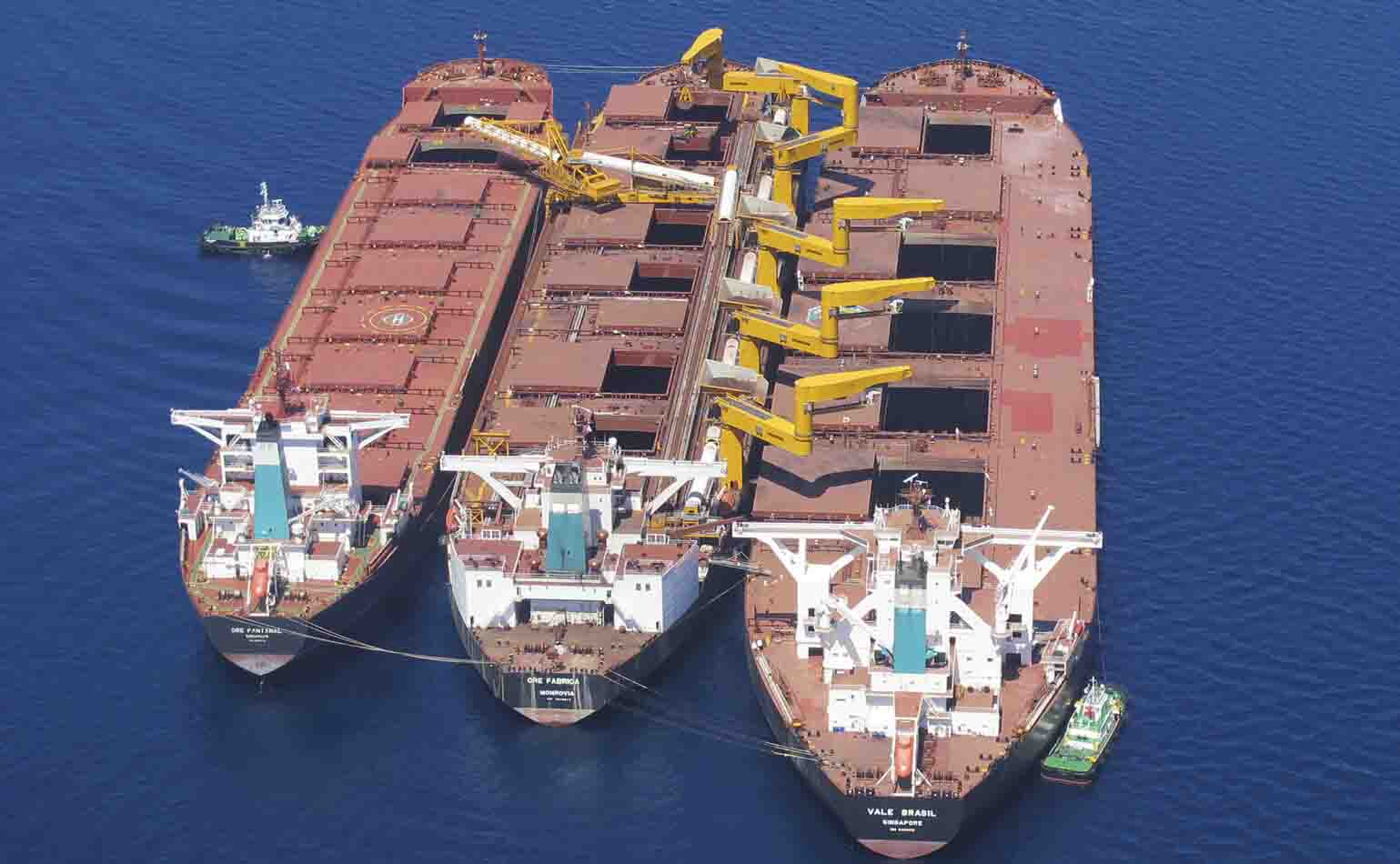
Classifications by Regional Trades
Some types of bulk carriers are named according to the trading area they frequent and the maximum dimensions these ports can accommodate.
Panamax, NeoPanamax, and Cape-size carriers are considered in these classes. But since their establishment, they have become a standard in the solid bulk industry.
Other newcomers came, so let’s discuss them here.
1. Seawaymax
Seawaymax ships are bulk carriers that have a maximum size that can fit through the locks of the Saint Lawrence Seaway.
They are 230 meters in length, 23.8 meters wide, have a draft of 7.92 meters, and could weigh 28,500 dwt.
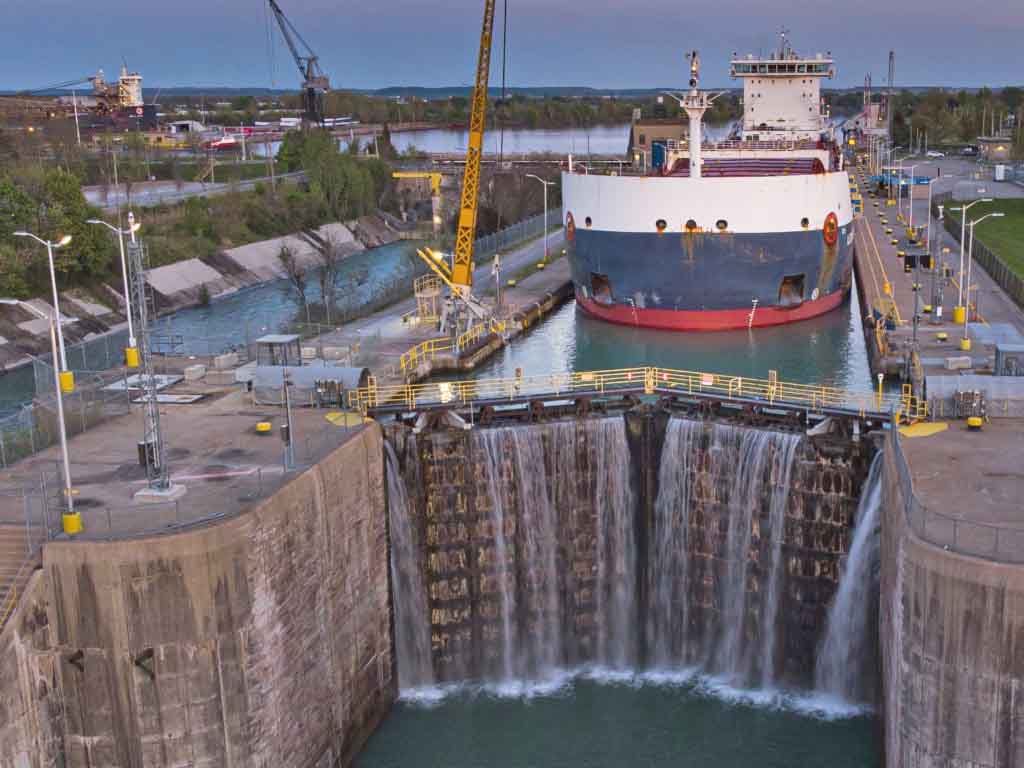
2. Kamsarmax
Kamsarmax bulkers are the largest type of carriers that can fit in Kamsar Port, Republic of Guinea.
Kamsarmaxes are bigger than Panamax with their size reaching up to 82,000 dwt.
Their maximum dimensions are 299 meters length-over-all, 32.36 meters draft, and 20.05 meters draft.
2. Dunkirkmax
If you’ve been to France on the North Sea side, you probably heard of Dunkirk.
This is where this class of ship got its name. Dunkirkmaxes are types of bulk carriers that can fit in the locks in the Port of Dunkirk.
They are in the Capesize category which weighs around 175,000 dwt. Thus, their length overall is expected at 289 meters with a maximum width of 45 meters. Their full load draft is at 14.2 meters.
3. Setouchmax
Setouchmax are bulk carriers that can safely navigate in the Setouchi Region of Japan. It is also called the Seto Inland Sea and is a major home of iron ore and coal terminals.
That being said, most Setouchmax belongs to the Capesize categories, while others are VLOC types. They weigh around 205,000 dwt with an LOA of 299 meters, a width of 50 meters, and a maximum draft of 16.1 meters.
4. Newcastlemax
Newcastlemax is slightly similar to Setouchmax bulk carriers in terms of size and dimensions.
They weigh a maximum of 209,000 dwt and have a draft of 16.2 meters in a fully loaded condition.
Like the previous bulkers, these types of bulk carriers have the biggest dimensions that can fit into the Port of Newcastle terminal in Australia.
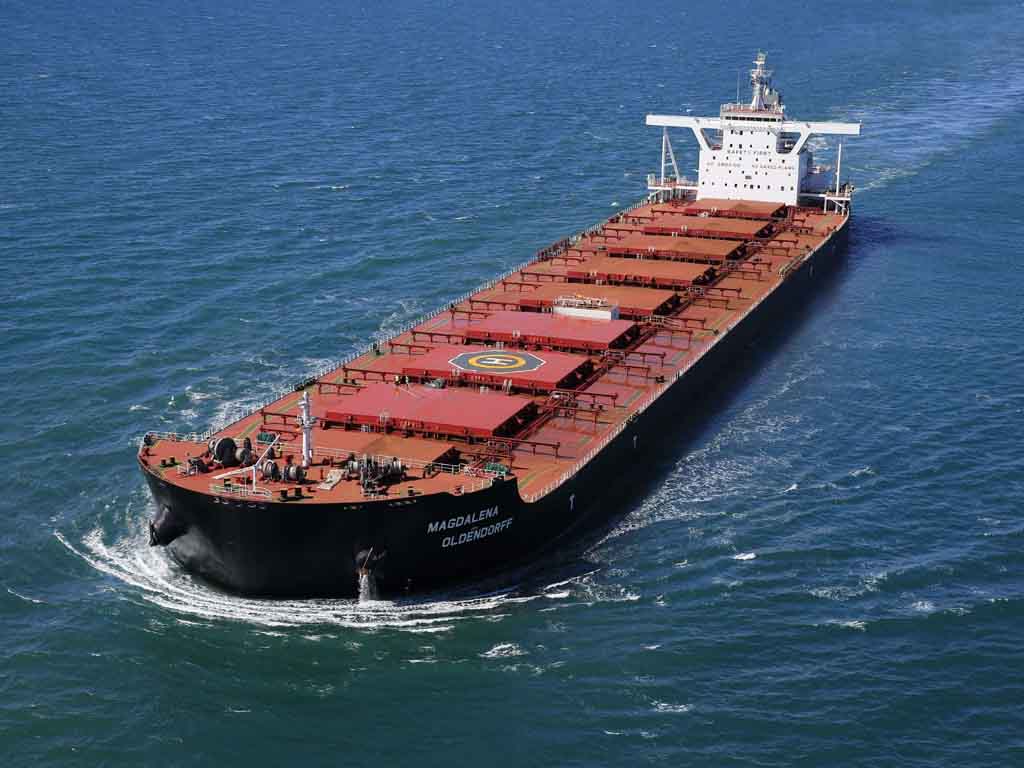
5. Malaccamax
Malaccamax bulk carriers are the biggest ships that can safely navigate in the Strait of Malacca.
This strait has a mean depth of 25 meters so vessels passing this area are expected to have a draft less than that.
Lastly, Malaccamax bulkers belong to the ULOC category. Their maximum size is around 300,000 dwt.
Though they are classified extensively, this arrangement only highlights the port where they can fit.
It’s quite different from the classification of oil tanker sizes where it’s based more on their deadweight capacity.
May the winds be in your favor.

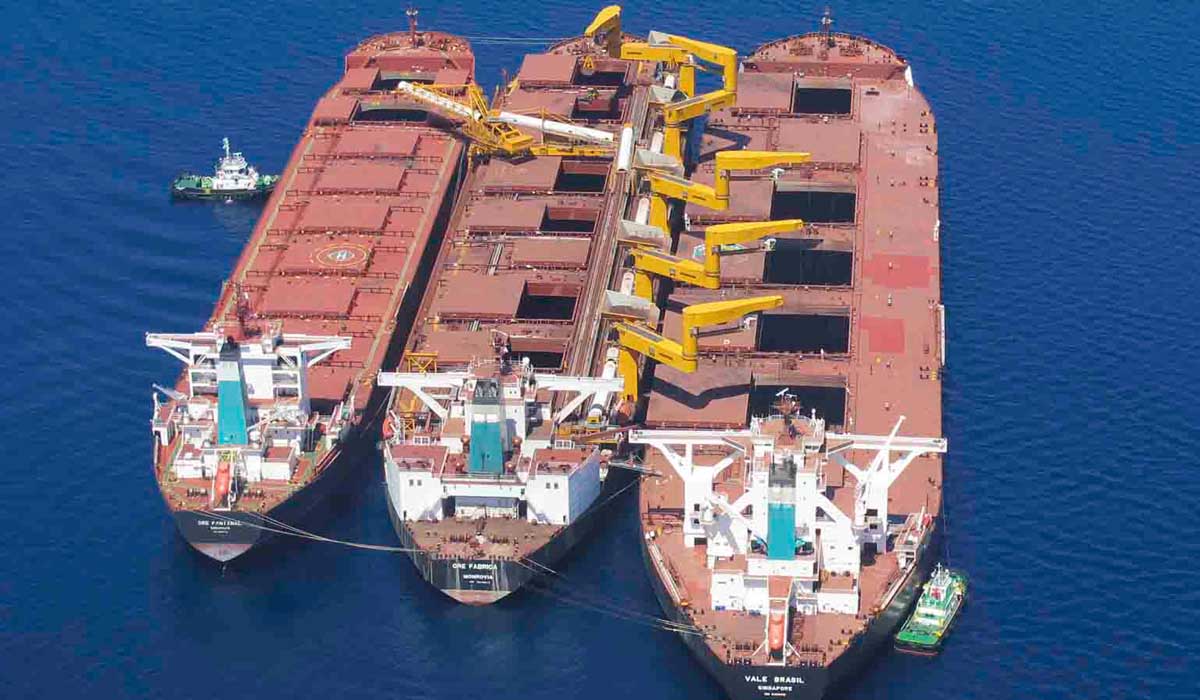
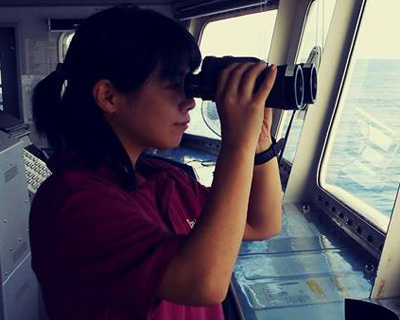
0 Comments